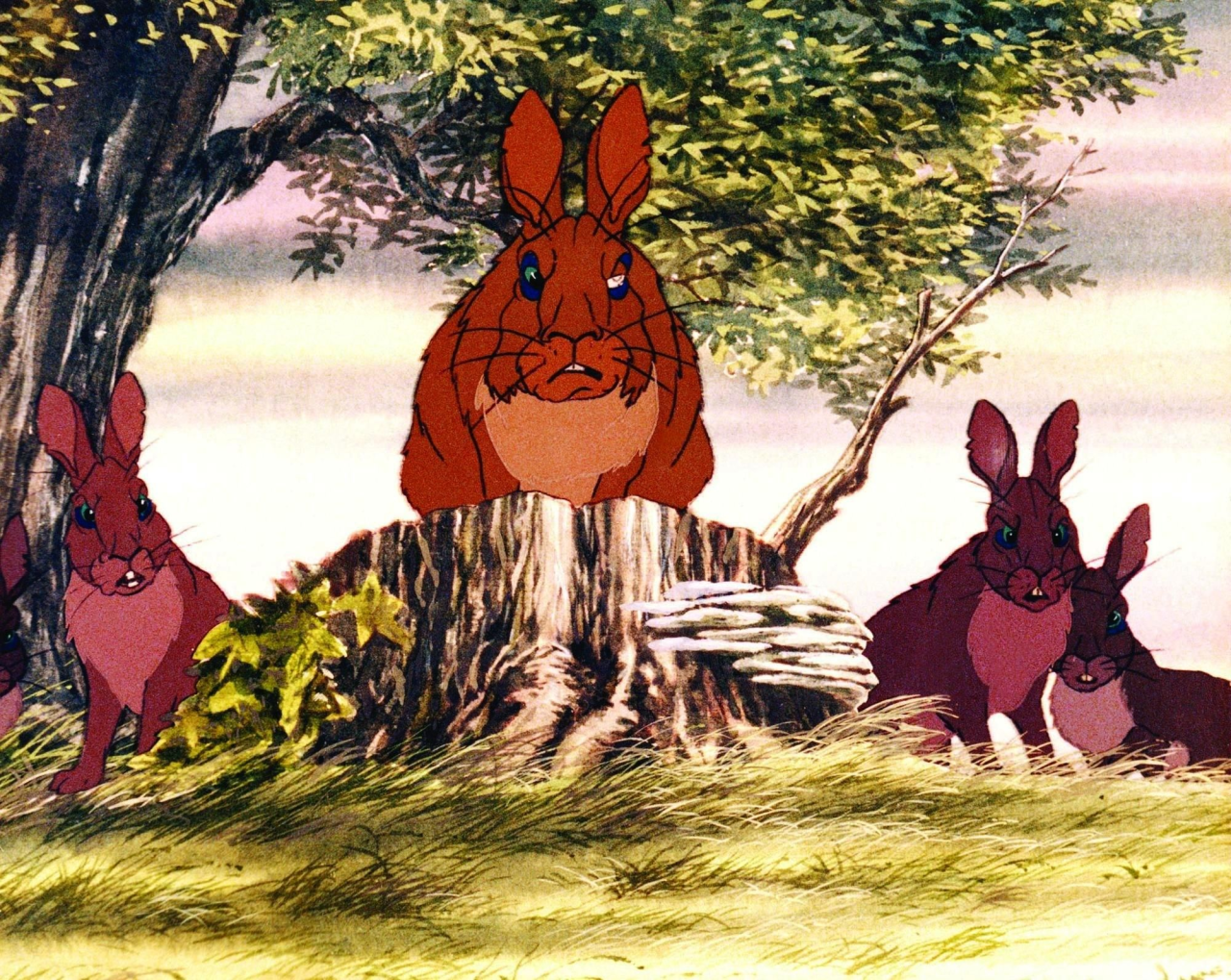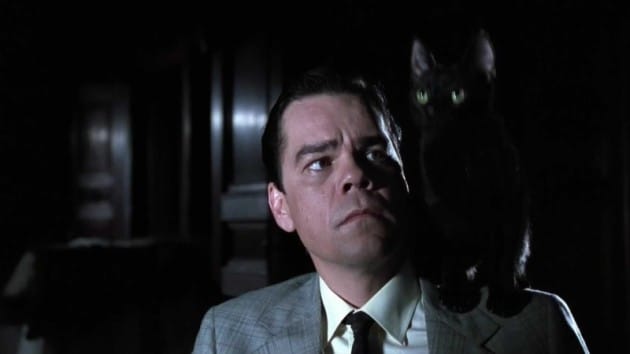Notes on Stadium Crust, Epic Crust, Neocrust, Emokrust, Morrow, and The Wascalliest Wabbit of Them All...Mankind

1.
Fall of Efrafa was a crust punk band that thematically utilized a mythos inspired by Watership Down, the 1972 novel by Richard Adams, about a fluffle of rabbits fleeing the destruction of their warren and attempting to establish an peaceable commune in the face of dangers posed by their more totalitarian-minded bunny peers, a ravenous dog, and that most wascally of all wabbits; man. It’s easy (and fun!) to fixate on the more facile “crust punx singing about autocratic Thumpers' ' aspect of Fall of Efrafa. And, never one to avoid the easy or fun, I’ve certainly used that elevator pitch to get people to check the band out, invariably giving a few potential listeners the false impression of Fall of Efrafa as some sort of novelty act. If that’s happened, I regret it. Because, while Fall of Efrafa did, you know, do three albums about Watership Down, the band used the allegories of Adams’ work as a jumping off point for their own allegories. The lyrics on the three albums that make up the main trilogy, Owsla (2006), Elil (2007), and Inlé (2009), can be largely taken, once the listener gets past the trappings of the song titles and album art, as normal (if exceedingly well written) song lyrics that fit well within acceptable, non rabbit related, anarcho-punk concerns; veganism, war, god, the overarching shittiness of humanity. Alex CF, the singer of Fall of Efrafa (the “CF” stands for “chronic fatigue” as Alex was diagnosed with Myalgic Encephalomyelitis in 2001), has a voice within crust punk traditions; he carries well the necessary razorwire bark. But he manages to approximate (Tragedy singer) Todd Burdette’s sense of vocal command without veering into the grunting parody that many Tragedy acolytes fall into. I mean, he’s distinctive enough. Within reason. Crust is a beautiful template, baby. Color outside the lines enough to avoid being generic, but ain’t nobody got time for a crust punk singer without a swamp of boisterous and collectivist bullfrogs in their throat. Musically, Fall of Efrafa didn’t hide their Neurosis tattoos, but they combined their influences with an attack all their own; one strange enough to carry even a serial Post-Metal Disliker such as myself through song lengths I normally wouldn’t have the attention span for.
I saw Fall of Efrafa play at ABC No Rio in 2009. I was there because I’d read about the band in MRR and ordered the CDs from Halo of Flies. I was by myself because I don’t have any crustie friends. (At least I didn’t in 2009. I may now. If there’s anyone reading this now who considers themselves both a crust punk and my friend, well…I like you too!) If you haven't had the pleasure of seeing shows at ABC No Rio, you have my sympathy. The venue room is (was…its’ supposedly going to reopen at some point) a box, with a floor. That’s it and that’s enough. It was a hot day and the box was full, going all the way to the distro table, with punx draped in more dreadlocks than t-shirts. It smelled so bad that it started to smell good, like the breath of a beloved dog. I don’t remember much except how bad it smelled and how happy I was. I didn’t go to live performances for transcendence. I liked listening to music in my room quite a bit, but I mainly went to live shows to either fulfill my obligations to whatever scene I was barbacking my way to the middle of, to hang out with friends, or to have a reason to go outside in the interminable span of time between happy hour and the hour of night the coke dealers were officially on the clock. But, alone and wildly bored with myself, with the sole room light flickering on and off, as wave over wave of post-apocalyptic choo-choo enthusiasts sloshed and stank around me, I was completely taken out by Fall of Efrafa; so much so that I grinned like mad and deeply related to my own sweat. They were one of the best bands I saw in the first twenty years of the 21st Century.
Fall of Efrafa, having said what they had to say about bunny totalitarianism, broke up after their third album. Then Alex CF (Bradshaw) did a number of other bands. Two of them, Light Bearer and Archivist, are as swellegant as post-metal, post-metal infused emocrust can get. But both are a bit on the gorgeous end of the spectrum for my indelicate sensibilities. (That said, the reader should check both out. They’re both great at what they do and I know how you downy gooses love your ISIS and shoegaze and whatnot.) One of them, Anopheli, is hella beautiful as well, but also screeching and pounding enough to reasonably set tires on fire to. Carnist and Worst Witch are both hardcore bands, so obviously I’m extremely down, and you should be too.
Alex CF has another band, Morrow, that he formed with David Robinson of Carnist. The two musicians, along with a cellist named Nicole (whose last name is apparently a secret even to my sources at the internet) and a growing coterie of hardcore/hardcore-adjacent veterans, put out a debut album, Covenant of Teeth, in 2016, on the German label Alerta Antifascista, and followed that record the next year with Fallow. Morrow just put out a new album called The Quiet Earth. When I heard it was coming out, I bought two copies of the record. Two digital copies. And then I bought records from all the guest vocalists on the album, a veritable embarrassment of crust punk singers. I love all these records now as well.
But hold that thought.
2.
When it comes to stadium crust, I’d say that the band Tragedy is a good gateway band. Even if their songs are usually pretty short, they don’t have any cellos or violins, they have zero songs (as far as I can tell) about militaristic bunny rabbits, and all their pretty parts are usually less than a minute; they still convey the essential squat-or-rot-the-opera, no-gods-or-masters-but-shows-feel-like-pagan-rituals, joyful (and hateful) contradictory anti-showbiz razzledazzle of the genre. The Portland band (who started in Memphis as His Hero Is Gone) set the template for what most people consider contemporary crust. They play hardcore that is infused with an almost stately level of high drama–Downton Abbey, but from the perspective of the anarchists–and a tectonic dynamism that rises from bullying bass and toms to airraid caterwauling. That said, it must also be noted that, before you listen to them, fall in love, and rush out to buy a fixed gear bike, Tragedy is actually a terrible gateway band. Because, if you have any taste at all in music or truth or beauty, you’ll love Tragedy. But Tragedy is also so platonically ideal at playing epic crust that, just because you dig them, it might not have any bearing on whether you like any other epic crust bands. It’s akin to trying your first cheeseburger and thinking you're going to love America. Rather, to love epic crust, you have to like Tragedy so dang much that you’re willing to run the risk that you’ll also love endless (and I do mean endless) waves of diminishing returns; each one burlier and lower endier than the last, until one day you wake up to discover that you’re right back where you started; a death metal fan.
So, Tragedy is not my favorite crust band. Nor should they be yours. They’re simply too much. They can be one of your favorite bands (they are certainly one of mine), but in a nondenominational sense. Like Motorhead or Alice In Chains or Black Sabbath, Tragedy’s universal (or at least universal to those who enjoy getting yelled at by tattooed depressives) crossover appeal renders them near useless as an archetype.
So, what are we doing here? Do we just pick the next best band on the list, forcing Martydöd, Masakari, and Morne to fight over the top slot like hardcore bands brawling over the last available Will Killingsworth mastering session of the calendar year? Do we pretend the last twenty years were just a dream and retreat back to the simpler pleasures of post-Thatcher despair and only listen to Misery reissues? Do we go to Pittsburgh or Portland, find a pack of stray dogs, throw some Phobia patches on 'em, and call it a day? Do we just pick some crusty enough band out of the crust punk hat (it’s got a hole in the back for dreadlocks) and pray to Gaia that the band hasn’t equated factory farming with slavery in any of their most recent Facebook posts? Do we see what the other dudes in Tao Cross are up to? Or do we take this vacuum at the top of the crust hierarchy to finally get free?
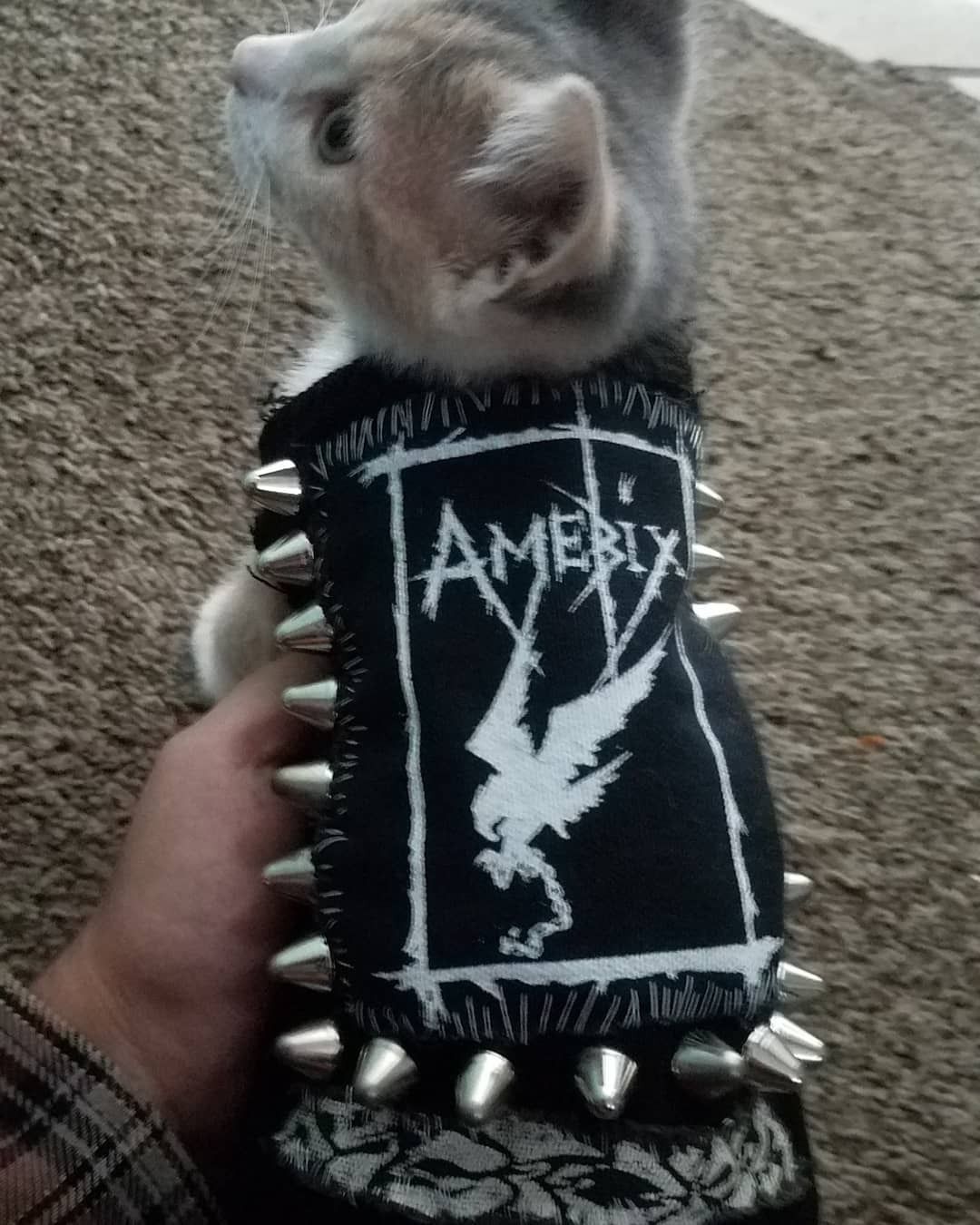
3.
“Crust” is a subgenre of punk that was developed in the mid eighties, by bands such as Hellbastard (the Newcastle band whose Ripper Crust demo in 1986 is the, if not the first to use the sound, first record to formalize the designation*) and Amebix (whose Arise came out in 1985), as (kinda sorta maybe) an extension of anarcho-punk. It’s an extremely political (on the left...if that needs to be said...), extremely pro-animal rights, extremely pro-beer, slightly burlier, slightly more than slightly more metallic take on punk/hardcore. Some of crust’s influences are clear; the UK punk (mainly Discharge and G.B.H.) that most divorced punk from its R&B roots, American thrash (especially Slayer), and the serrated guitar sound of early Celtic Frost. Like a lot of genres that are as dependent on contextual (life)style and aesthetics as they are on a particular sound, crust is as much what it ain’t as what it is. It’s metal-y but not metalcore. It combines metal and punk, but it ain’t crossover. It’s got slow parts, lots of ‘em in fact, but not breakdowns per se. At least not in the picking up change/creepy crawl mosh sense. I don’t want to get bogged down in the minutia of the genre’s definition, or its history. Because I’ll get it wrong. Curious readers should invest in Ian Glasper’s Trapped In a Scene: UK Hardcore 1985-1989. Used copies of the book go for $150, but buying a digital version is easy and a $14 well spent.
Another definition, one less insecure about being judged as a poseur, is offered by the wonderful Terminal Sound Nuisance blog… “Rather than a strict set of narrowly defined elements, I like to think of crust as a particular, but fluid, atmosphere. It is a tension, a mood, a worldview as represented and stylized in a particular record using aggressive, heavy, dirty, groovy sounds inherited from hardcore and metal. And although there is such a thing as ‘crust aesthetics,’ I like to think that they can be adapted and built upon cleverly in order to create or re-create. Basically, I stand for an encompassing conception of what is ‘crust’ instead of the few boring templates that seem to be the norm today, i.e. uninspired Wolfbrigade-mimicry or badly played takes on Bolt Thrower.”
The difference between a crust band (Aus Rotten, Extinction of Mankind), a stadium crust band (Nux Vomica), a hardcore crust band (From Ashes Rise), a blackened crust band (pretty much any crust band of the last five or six years, especially any side projects of successful hardcore or metal bands that don’t involve synths), crasher crust (the bartender with a shoelace for a headband’s band), and a d-beat band with higher (or high at all) production values (Disfear) is highly debatable. For a neophyte, it can be bewildering. You can’t always find a bar that lets dogs in and just ask the nearest rattail’d nomad sporting a Profane Existence hoodie just what the exact difference between Severed Head of State and World Burns To Death is. It’s not hopeless though. You have to read for context. While, sound aside, d-beat bands often helpfully maintain an anachronistic affinity for spiky black leather jackets and additionally throw a “Dis-” in front of their band name to indicate their fealty towards Discharge, crust bands tend to use an array of social-contextual signifiers. While, at first glance, many of these signifiers confusingly overlap with those of other subcultures, there are tells. If the use of post-apocalyptic imagery is a well worn trope all across the metal and punk spectrum, the careful observer will notice that crust album art just as often portrays the end of civilization as a net positive; with shaved-side, floppy mohawked elf-urchins shaking their end-time neo-agrarian tushies in the atomic moonlight. And if a band’s artwork is predominately skulls piled high, with nary a new age traveler raving over society’s ashes, but the band’s logo seems too knife-scratched to be d-beat but too legible to be metal, take a minute to check the album insert for PETA (or Animal Liberation Front) literature and you may be in luck. And if a band’s logo does have Crass-style stenciling, or archtypically black or death metal font, but the band also has at least three words in their name, and at least one of them is either “extinction,” a variation on the word “humanity” or “nuclear holocaust,” and a word, in any language, for “shit,” you’re probably on the right Bandcamp page. Finally, should all else fail, if you’re watching a band play on the floor of a squat and that band isn’t Leftover Crack (and, Inshallah, it isn’t), then you’re probably watching a crust band.
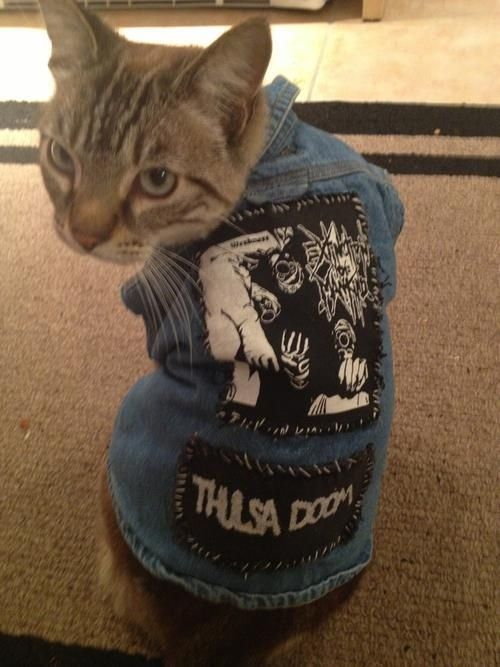
4.
Lest any of the above seem glib or dismissive, let me make something extremely clear; I fucking love crust. I fucking love the music of crust; the cave bear vocals about the evils of dairy, the drums that sound like an orgy of mountain goats, the guitars that sound like “Dethroned Emperor” played by a sentient slab of undercooked ham. I fucking love all the acroutremonts and style of crust. From the vests to the waist length dreads to the iconography to the tiny, tiny pants; I genuinely GENUINELY think the whole aesthetic is extremely cool and looks fantastic. As with my official position of forever rolling my eyes at black metal bands who think wearing corpse paint is “corny,” I strongly prefer denizens of subcultures who have the strength of character and flair to know that no self respecting musician should ever leave the house looking employable.
I don’t love that an unfortunate number of crust punk’s innovators from the ‘80s have, in the last couple decades, transitioned from believing in macrobiotics, ley lines and, all things considered, a pretty reasonable amount of UFOology, to subscribing wholeheartedly to the idea that the weather is run by lizard men, the world’s infrastructure is covertly run by a group of people who can’t even manage to run decent interference for Woody Allen’s transgressions, and that germs, because they don’t announce themselves like riot police on the cover of a Subhumans LP, are a psyop perpetrated by a secret cabal made up of Tories, the Rothschilds, Russell Brand’s evil twin brother, Brussell, and whoever it is at Earache Records that’s in charge of getting the royalty checks out on time. I’m hardly a reasonable man. I believe in God, “energy,” and that the Queen of England obviously had her ex-daughter-in-law killed. But there’s fat, blood red line between hoping to see my cats again in Heaven, knowing that the evil of the English knows no bounds, and believing that playing Bolt Thrower’s Realm of Chaos LP backwards on repeat has granted me super secret, esoteric, Warhammer 40,000-level insight into the Illuminati that’s really behind 9/11, Covid, and why my cat won’t look me in the eye when I’m working out.
That said, I don’t think gnosis is something to actively avoid. If a crust punk band has some theories, I’m open to hear them.
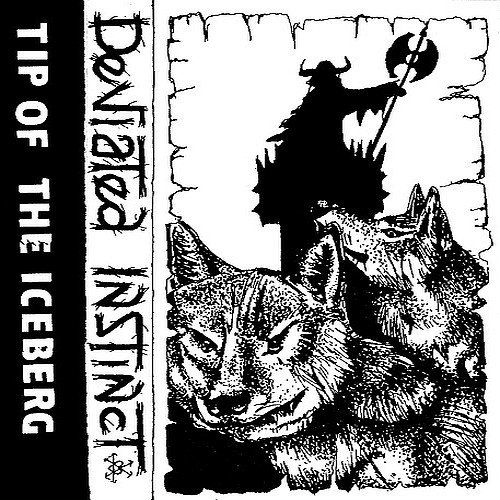
5.
So, even when I love something, particularly when I love something, I’m disinclined to make it a field of study, a passion, or a job. My ability to stay in any school is, historically speaking, laughable. I’m passionate about my girlfriend and (in a non sexy way) my cats, exclusively. And, as H2O famously sang in their cover of The Smiths’ “Heaven Knows I’m Miserable Now,” “I was looking for a job, I said ‘fuck a job,’” Meaning, just because I love crust doesn’t mean that my knowledge is encyclopedic, or even expansive. I love post-punk too, even have a radio show dedicated to it. Doesn’t mean I’ve made it all the way through an entire Idles or Shame or Fontaines DC album even once. There are only so many hours in the day and I got cats to kiss, you know? So even as I’m pretty up on the ‘80s and ‘90s stuff and most of the Halo of Flies/Profane Existence catalog, I was still, while writing this newsletter, doing a fair amount of catching up on bands that may or may not have been influences on Morrow. (Ekkaia was my bag. Less so Buried Inside.) After a certain point, however, I stopped assigning myself homework and got back to what I wanted to do in the first place; listen to the new Morrow album on repeat until my teeth fall out.
The Quiet Earth is the (maybe) final part of the “Norr Saga,” a (maybe) trilogy about a future primitive society exploring the wreckage of an earth that's human population has been almost entirely erased by ecological catastrophe. I know all this because I read reviews of the albums and interviews with Alex. As with Fall of Efrafa, the singer’s lyrics are narratively compelling but oblique enough (not to mention sung scabrously enough) that if the listener feels like pretending all the songs are about hating the state and/or having complicated feelings about how delicious the Burger King Impossible Whopper is, the listener can do so. Me, I split the difference. I truly enjoy CF’s lyrics, and appreciate his ability to convey an ambitious use of the language without swerving into proggish insufferability. But I’m also not following the story like there’s a red ball bouncing over every word to the beat. Instead, I’m following the normal path of daydreaming that comes with engaging with a body of music that, from its stretches of widescreen reverie into its long bursts of ratatat wowie-zowie, is one part Terrence Mallick and two parts John Woo (or Wick. Pick your poison). Alternately, should the listener’s imagination not be up to the challenge of supplying imagery, The Quiet Earth, with its lyrical themes of a sun and planet doing their best to eliminate the pesky humans, might also be considered a suitable soundtrack companion to reading N.K. Jemisin’s Broken Earth series.
The members of Morrow use the term “emokrust” to describe their sound. While I will never use this term with a straight face, I’m glad that I’m not the only one whose conception of “emo” starts with Rites of Spring and ends with the Heroin “paper bag” EP. (EDIT: Alex CF wrote on twitter, "I would like to add, we have never called it "emokrust" - I have no idea where that spelling came from, but it wasn't from us!" So... NEVER MIND. That's what I get for getting information from a music review. Like I'm new here. Apologies to Morrow!) I actually prefer the terms “epic crust” and “stadium crust,” even though I doubt anyone who actually plays crust would use those terms without wincing. I can see why your average stenchcore musician might reject said terms, with their implied anti-egalitarianism and/or mockery. But I do think “epic” and “stadium” best describe the actual sound; which is enormous. While the fast parts of stadium crust songs have the usual pyroclastic crunch of early UK crust and the metallic guitar leads of Japanese hardcore, the songs also, particularly as written by a band like Morrow, revel in their long, pastoral loveliness, with the cello and violin weaving in and out of the peels of distortion, like Fairport Convention if Richard Thompson was able to express his boundless rage in a more overt, probably healthier, manner.
The most endearingly peculiar aspect of The Quiet Earth is the Greek chorus of crust all-stars. Singers from bands ranging from neocrust godfathers His Hero Is Gone to Habak and Wildspeaker (two bands I didn’t know, both of whom rule inordinately hard) add rough hewn vocal heft to the proceedings. At times the chorus is compositionally tight; sounding like a dream of dual-throat nü heaviness, with the clean singers locked out of the studio to mope. And at other times, such as on “Fugue Plague,” the cavalcade of rancorous shouters reminded me of the family meals in Moonstruck. Maybe not the intended effect, but Moonstruck is a fucking delightful movie, so…
(Zohra has pointed out to me that not everybody has seen the film Moonstruck. Fair enough. Those of you who have, as of yet, neglected to immerse yourself in the love and bittersweet laughter of that endlessly charming Nicolas Cage/Cher romance should feel free to switch out that reference for “...reminded me of Curb Your Enthusiasm’s Susie Essman going in on Larry.” Susie’s righteous fury, especially in the context of a stadium crust punk song about existential grief and the cyclical nature of humanity’s recurrent impulse towards shortsighted cruelty and need, hopefully works just as well as picturing Olympia Dukakis in a battle jacket.)
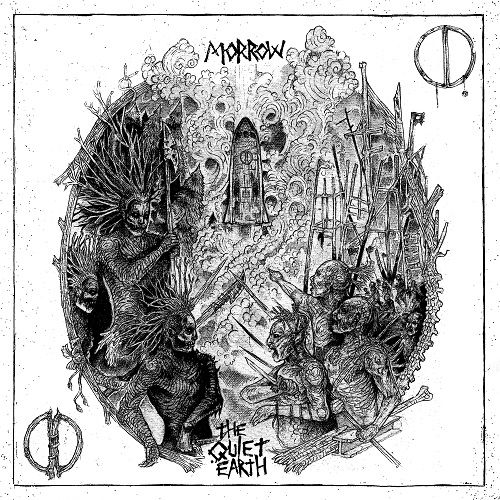
6.
Whether one loves crust (in any/all its permutations) as the author(s) at Terminal Sound Nuisance do; as an inherently free mode that’s liberatory aspects come through the music as well as define it, or as others (maybe including me sometimes) love crust; as a grouping of distinct, overlapping, but still relatively regimented sounds where pleasure is to be found in how artists (punx) move around in, and push against, the genre’s confines, doesn’t really matter. Maybe you don’t subscribe to either idea. Maybe you just like the riffs and hate Big Soap. Maybe you’re just looking to fill out the “sounds like Neurosis” section of your record shelf. Maybe you think crust sucks and all of this is decadent historical reenactment by and for delusional hobbyists. Or maybe you’re one of those lucky ducks for whom “punk” is the answer to its own question, and anyone who intellectualizes punk beyond that is a square cop. All good answers. All I know is that ugliness tempered by strains of beauty is a relevant art, as it was in 1985 and as it will be for any future I can imagine. So I'm grateful for bands like Tragedy and Nux Vomica and Moonscape and Habak and Swordwielder and Life and Wildspeaker and Rigorous Institution and From Ashes Rise and and and..., all those bands that are attuned to that ugliness and beauty and, even if apocalypse-mindedly so, some kind of future. And I’m grateful most of all to a band like Morrow, whose imagination in all those regards is boundless.
Just so we don’t end on too earnest a note, I’m also crazily envious of how all you crusties manage to get your t-shirts so thin and threadbare while still managing to keep the relevant information on the front legible. You fuckers may survive the nuclear holocaust long enough to get that tomato garden seeded in a tank’s turrets after all. Just know that I’m pulling for you. (Non crusty readers, I'm pulling for you too.)
Thanks for reading.
*


PS. A couple people pointed out that I really should have mentioned Nausea in this essay. They are correct. Nausea, New York's first crust band, was boss.
PPS The reissues of my dad's mystery series have begun. Truly fucking sucks that he's not here to see it, but I'm still proud as hell. Check it out.
